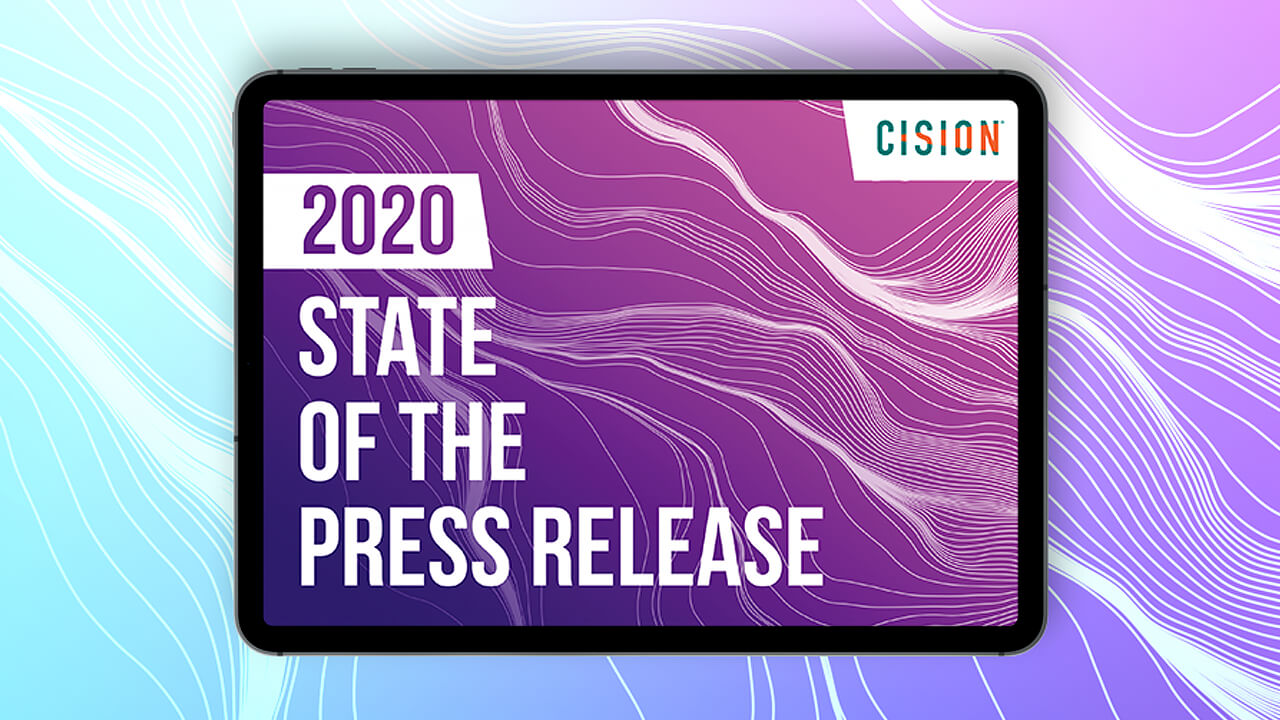As communication best practices continue to evolve, and it can be a challenge to keep up. We learned from our first-ever State of the Press Release Report, published July 2020, that there is much more to a press release than simply writing compelling content. Not only do you want to write good, quality content but that content needs to grab attention from journalists and your target audience.
Our State of the Press Release highlights 10 key takeaways that go beyond writing and uncovers data-driven tips and tricks that will help your next press release stand out and gain the attention you desire for your brand.
- Create Short, Concise Headlines: Be strategic – the headline is the first thing a reader or journalist notices. The average headline length is 88-characters. Always keep the headline concise with the most important keywords and phrases in the first 55- to 70-character space. Many press release feeds and even search engine results cut off headlines at this spot.
- Multimedia is Essential: Visual content draws more attention to your story and drives more engagement. A press release with photos drives more than double the click-throughs when compared to a text-only press release. Unable to find a multimedia asset to include with your news? Look on your company website and social channels. If you are still having trouble, take a look at our Shutterstock library – where we give you access to over 200M royalty-free stock images.
- Keep the Length Under 600 words: You want to provide enough detail, but also keep the content short and sweet. Readers are looking for quick answers; the important details should be covered right away in your headline or first paragraph, so lead with the “why”. On average, press release length is around 686 words. We see a sharp drop off in time spent on the page as the press release gets longer.
- Formatting Should be Top of Mind: Sometimes, more must be said and 600 words is not enough to cover it all. When your press release is a bit longer, work in formatting techniques like bulleted or numbered lists, quotes from executives, and bolded section headers to break up the text. In doing so, you’ll make your content easier to consume and help direct the reader to the key details.
- Timing Your Press Release: What Time is Best? When is the best time to send your press release? 52% of news is sent on the hour and half hour. Our report shows that the highest volume of copy is sent on Tuesdays at 8:00 AM ET. But this does not mean it is the best time to send. In fact, you should stay away from high volume times and choose an off time (like 8:47 AM ET) to stand out from the crowd of news.
- Timing Your Press Release: What Day is Best? In addition to hourly timing, you should also take into consideration what day of the week is optimal for your news. Our report showed that the highest views on a press release are seen Tuesday-Thursday. Take advantage of this by scheduling your news early- to mid-week to give your press release time to circulate during this high-visibility time.
- Timing Tips for Investor Relations News: There is a slight difference when you consider trends in investor relations news. The highest volume of investor relations copy is seen at market open (9:30 AM ET) and market close (4:30 PM ET), which may not come as a surprise. What does this mean for you? If you are not sending out market-moving news, stay away from market open and close, and remember to choose an off time so your press release is not lost in a crowd of financial copy.
- Proofread, Proofread, Proofread: Before submitting your final press release, make sure the content has been reviewed for grammatical and punctuation errors. Don’t forget to proofread the headline, body copy, and check hyperlinks. But if something slips through the cracks, PR Newswire has your back. PR Newswire’s editorial team made nearly 40,000 catches on client copy over 12 months – that is 40,000 errors in press releases that nearly made it to journalists and readers.
- Keep Up with Current Events: Always stay aware of current events. For example, COVID-19 changed the news cycle and brands everywhere began communicating the steps they were taking both publicly through press release distribution and internally to employees. Whether big small, make sure your brand is taking notice of current events and communicating effectively and transparently with all important audiences and stakeholders.
- Bonus Tip: Limit the Number of Hyperlinks Not covered in the report, but a bonus tip – limit the number of hyperlinks throughout your press release. Google recommends 1-3 unique links, make sure not to duplicate any. When you include too many links, it can be overwhelming to the reader. By keeping it to 1-3 total, it better directs the reader to your call to action and what you want them to click next.







